
Get to know it and you will unlock your inner power. Maybe even walk on fire!
One of my favorite things to do is breathe. I just love how it makes me feel…calm, centered, grounded, inspired, quiet. Oh, yeah. And it keeps me alive! Breath is the link between the conscious and unconscious mind. You can change your life by changing your breath. Anxiety? Stress? Get to know your breath. Back pain? Tight hip flexors? Get to know your breath. Your respiratory diaphragm is the primary muscle of respiration, breathing and it is located at your CENTER! When you lose your center, which we often do in our busy lifestyles, you create tension in the respiratory diaphragm. This creates tension in your breath. You cannot find peace of mind without peace in your diaphragm, the center of your being. The facts below introduce the anatomy of this most important muscle and start you on the journey of taking responsibility for your breath! Healing your body and mind from the inside out begins with your breath. You are in charge. It is after all, YOUR breath.

Ribs, vertebrae, cranial bones, shoulder girdle, pelvic girdle, femur connect to the diaphragm.
Extreme diaphragm vacuum is uddiyana bandha. This is an awesome exercise for the diaphragm.
Shape of the diaphragm is created by the organs it encloses. (Liver)
Pumping away, the heart enjoys riding up and down, actually tethered to the diaphragm.
Inferior to the diaphragm is the liver.
Receptive core = receptive breath. Get the deep layers of the torso unglued for better breath.
Abdominal muscles must cooperate with diaphragm for breathing, speaking, coughing, etc.
Three-dimensional space of the lungs is home to the diaphragm.
Openings in the diaphragm exist for the inferior vena cava, esophagus, descending aorta.
Radiating fibers or tails of the diaphragm connect to the fascia of psoas and quadratus lumborum.
You can think of the diaphragm as a belly bulger or rib cage lifter.
Dome-shaped muscle that’s the floor of the thoracic cavity and roof of the abdominal cavity.
Inhalation-dome moves downward, increasing the volume of the thorax and lungs.
And exhalation-dome moves upward and the elastic lung tissue returns to its normal size.
Properly functioning breathing muscles = structural foundation for the torso & nervous system.
Hiccups are the result of an involuntary contraction of the diaphragm.
Roughly 90 percent of the diaphragm rests on flexible tissues. (keep your tissues flexible)
Abdominal breathing relaxes the diaphragm’s nerves, helping to create a calmer body & mind.
Get to know this primary breathing muscle at your center and unlock your inner power!
Muscle fibers of the diaphragm attach to the inner surface of the ribs & the lumbar vertebrae.
What to do? What to do? Learn how to breathe properly. It’s so important. Get down and roll out all the muscles connected to the diaphragm, using your YTU therapy balls! New sizes are ready and waiting for you! Roll into relief by releasing the muscles and tissues and fascia of the thoracic spine!
Learn about our Therapy Ball Programs



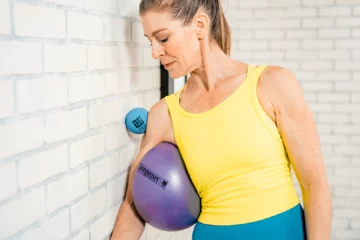

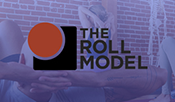
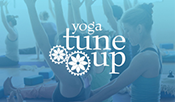


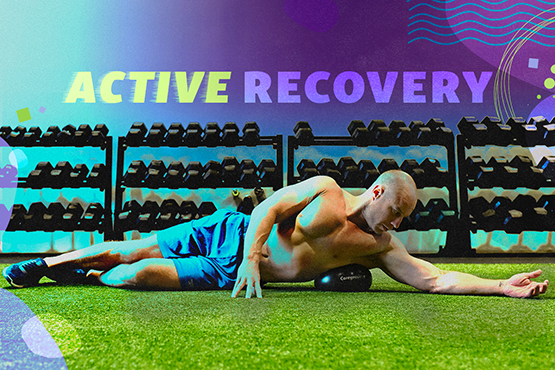
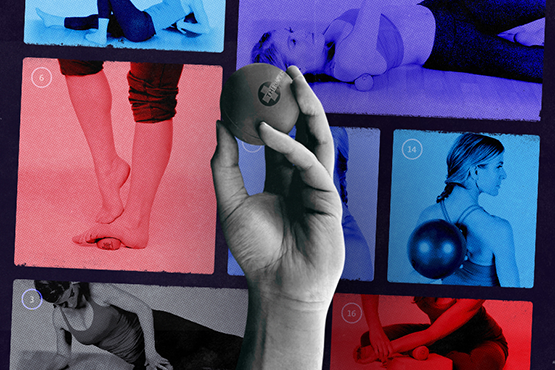
This is fantastic! I am going to have my music students (low brass players…tuba and trombone!) read this article. This is so helpful in understanding that learning about the diaphragm is a very rich and multi-faceted exploration that truly encompasses body, mind, and spirit. Thank you!
So fascinating!!!! I am so curious to learn more about this primary muscle of respiration- thank you for everything in this post! Pretty important part of the body that most people have no awareness of- breathe, support, core, the nervous system. I cannot wait to learn more on this!
This post is really neat for me to be reading because it’s made me realize how many of my imbalances are very much connected to my diaphragm and the way I breath.
Quote-ables Ill be sighting from this awesome article:
“You can change your life by changing your breath.”
“When you lose your center…you create tension in the respiratory diaphragm.”
“Healing your body and mind from the inside out begins with your breath.”
“Receptive core = receptive breath. Get the deep layers of the torso unglued for better breath.”
“Radiating fibers or tails of the diaphragm connect to the fascia of psoas and quadratus lumborum.”
“Dome-shaped muscle that’s the floor of the thoracic cavity and roof of the abdominal cavity.”
But this quote literally just blew my mind and changed my life:
“Shape of the diaphragm is created by the organs it encloses. (Liver)”
I was drawn to this article because of the title (love Tony Robins). Thank you for your enthusiasm on the breath, I too have this enthusiasm. Great information and a fun way to structure it to remember. Thanks!
This is such a creative blog post! Thank you for thinking out of the “boxana” ! I found a lot of useful information in this post to use in my muscle essay.
I’m taking Maura’s Embodied Anatomy class in Seattle. Just watched Jill’s YouTube video on the bridge pose. The relationship between the diaphram, shoulder girdle, and pelvic floor/diaphram became much clearer. I can see how breathing into the top of the lungs like this helps to deal with “dead volume”, improve the ratio of air volume to blood volume and cleanse the lungs. Cool stuff.
What an interesting, informative, and artful article. I feel so much better acquainted to the diaphragm now. I didn’t know the heart was tethered to the diaphragm.
Thank you for the notion of the diaphram as the center. You show how it is central to vaital functions like breathing and the heart pumping. The connection of the shoulder girdle to the pelvic girdle via the diaphram also shows how central it is to all movement. Breathing, heart beat, moving and calming the nervious system: definitely central!
[…] Tune Up® Blog « The Tony Robbins Muscle: the Respiratory Diaphragm The Glorious Gluteus Medius […]
Wow. I am impressed. This was a supremely informative article. Good for me for reading it!
But thank you so much more for writing it.
The Diaphragm is exceptionally important. However, what struck a cord with me was your emphasis on getting to you know your own breath.
Each and every breath we take is unique and fleeting. However each breath, like you so eloquently put it, is fundamental to the sustainment of life itself. It is the rhythm of the breath that we continuously are communicating with. Once that rhythm is disturbed, guess what? WE are disturbed.
That said, I found a briefcase full of gold today, and it came in the form of your article.
Thanks again for sharing.
One of the most memorable thing I learn in YTU teacher training is that the diaphragm is constantly applying pressure to the abdominal cavity during inhalations. As such, slouched back and crocked postures that misaligned rib cage and the pelvis results in an uneven pressure to the organs. This is a powerful and influential muscle!
Thank you Terry. I taught uddiyana bandha this week to a class. One of the students, (an 85 year old) called me later that day to report how powerfully the uddiyana bandha practice had affected her digestion. She was pleased.
I’ve always personally loved working uddiyana bandha – it’s a real way to help the diaphragm exaggerate its movement pattern to affect so many other body processes – I always feel like my thinking is clearer – the power of the diaphragm to breathe us into better health is so apparent given the information you provided above – that “roughly 90% of the diaphragm rests on flexible tissues.”
mmmmm. Thank you for the acronym. I just did the Coregeous video! I feel so good in my belly right now. Feeling the discomfort and fear actually transform into ecstasy during the video was amazing. Also, I didn’t know that the diaphragm connects to the inner surface of the ribs and the lumbar vertebrae….knowing that somehow frees up my lumbar vertebrae. Thank you!
This is informative and creative…acronym format! It’s a great way to remind students (and myself) to breathe.
I was amazed in the difference I felt in my breathing after working on my QL muscle with the YTU Therapy Balls. It helped me tune in to the amount of attention I was holding there. Afterward my breath felt fuller, smoother and had a completely different texture to it. Better breathing through ball work!
Terry – What a great amount of information packed neatly into this acronym. Today in Level I certification with Jill we talked about so many of these facts. I think that there is not enough emphasis on the practice of breath. How to breath properly, fully, how to regulate the breath in order to influence the nervous system. The breath can have so much influence in the overall health of the body physically, energetically, and mentally that I believe that if it is the only practice that one does it can change the landscape of your being inside and out.
This is such an important muscle! WhenI break down breathing for my students, they drop deeper into the class and are more able to access information in the practice. The fact that abdominal breathing relaxes the diaphragm must have a huge part in that. I also am always blown away by the fascial connections of the diaphragm in the body – the lumbar spine, the psoas, the QL! These are places of so much injury and tension and misery for many bodies. Getting in tune with the breath and the diaphragm could ease those connections – making the body move with more ease. Thank you for this info!
After last week’s Integrated Embodied Anatomy course with Maura in NYC, I found myself talking about the respiratory diaphragm in my classes and helping my students visualize it as they breathed. This muscle is fascinating; especially in its role in creating spinal stability. I have been excited to tell my students that if they are not connected to their breath and their respiratory diaphragm, they are literally setting themselves up for a weak core and poor posture. There tends to be such a focus on the superficial structures of the body in our culture (ie. washboard abs, ripped muscles), so I like getting my students connected to the deepest fascial & muscular layers within themselves. I like to refer to this invaluable information as “nuggets of gold.” As YTU teachers, I feel we all sprinkle nuggets of gold throughout our classes and workshops! Thank you Terry for writing about this often misunderstood and sometimes forgotten muscle.